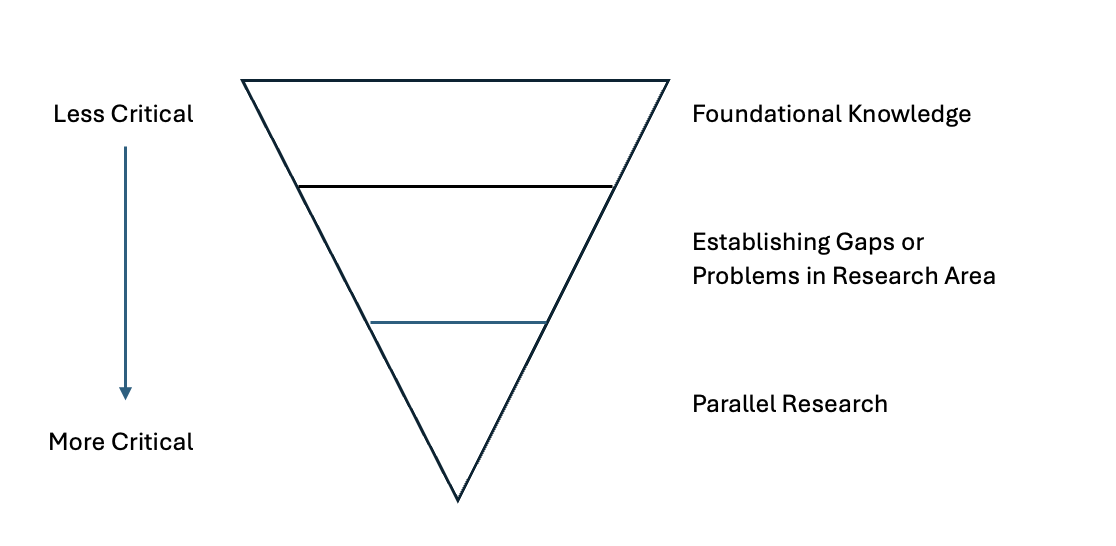Writing Literature Reviews
What is a literature review?
A literature review is a section of an academic project (e.g. a chapter, or part of a chapter) that traces the development of a research area to provide a foundation for the writer's own research. A good literature review will not simply describe previous studies, but will take a critical approach and add value and insight while summarising the scholarly development in this area.
Writers can take a critical approach to literature by:
- categorising sources in novel ways (e.g. providing some innovation in the framing of research claims and findings)
- drawing novel links between sources (e.g. explaining how the results of one study may support or question the conclusions of another)
- evaluating sources (e.g. comparing the relative merits of sources)
How can I organise my literature review?
In some academic areas, writers tend to include a literature review within their introduction. In other fields, writers create a stand-alone chapter or section, entitled "Literature Review" (or, alternatively, "Background", "Theoretical Framework", "Research Context" etc).. In terms of a common organisational patters, writers in all disciplines tend to describe older, more general, or more established information first before moving towards a critical treatment of more recent, more specific or less certain information. This movement, from established to novel scholarship, directs the reader through existing research towards what the writer's main exploration shall be.
This pattern can be thought to encompass three "moves":

What to include in the different parts of my literature review?
The amount of space given over to each move will vary depending on your topic. Below, we explore further what writers might incorporate into these moves:
1. The Foundational Knowledge Move: Describes uncontroversial content that the writer does not wish to question:
-
- facts
- strongly supported claims
- established frameworks
- established techniques
- commonly used arguments
- citations to older publications (which have withstood the test of time)
2. The Establishing a Gap or Problem Move: Occurs when an author begins to question the current state of knowledge, or when they describe other authors who have questioned it. This move is often shorter in length than the other two moves and may be articulated in only one or two paragraphs, including:
-
- gaps in the literature, where the standard tools of the research area have not been applied to a certain context
- problems in the literature, where questions remains unanswered
- a programme to improve an approach
3. The Parallel Research Move: Describes attempts by more recent research to address the gaps or problems likely mentioned in the previous move. It might include:
-
- detailed descriptions of how scholars have attempted to fill a gap or solve a problem
- focus on how scholars have approached certain problems (i.e. close analysis of their experimental methodology or critical approach)
- critically identifying groundbreaking elements, valuable contributions or pitfalls of previous studies in this field
- citations to newer publications (whose conclusions remain unverified)
What if I have am reviewing different types of studies, or topics, in my literature review?
The diagram above shows only the ordering of literature reviews based on one research topic. Many authors, within their dissertation or thesis, will look to focus on several research topics. In this case, please consider these common organisational patterns employed by previous Oxford students: Writers Reviewing Multiple Research Topics
Oxford Literature Review Examples
Please follow the links below to disciplinary examples of how the above model is applied in texts written by Oxford students:
